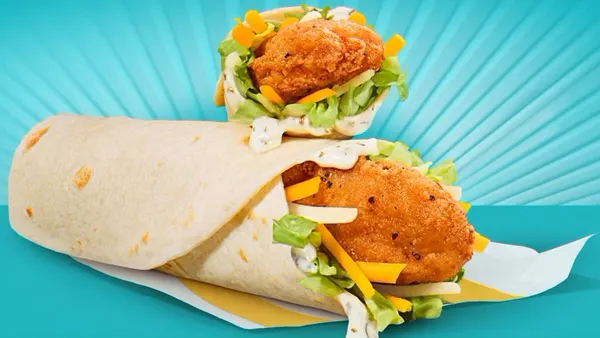Dive Brief:
- Starbucks has finally emerged from its U.S. sales slump, reporting Thursday that sales at stores open for at least one year jumped 4% during the company's fourth quarter — topping analyst expectations of 2.7% growth, according to a company release. The company's revenue rose 10.6% from $5.7 billion in the year-ago period to $6.3 billion.
- Analysts have tied this success to the coffee chain's increased focus on the afternoon daypart, including "happy hour" deals on frappuccinos and other loyalty-based discounts, which drove record consumer spending in its cafes. The company's Starbucks Rewards program grew to 15.3 million active U.S. members during the period, a 15% jump year-over-year and its highest growth rate in seven quarters.
- The news of this boost in performance comes just a few days after competitor Dunkin' announced it's relaunching espresso across its U.S. stores, including "state-of-the-art" equipment, new restaurant training and product packaging to better compete with premium rivals.
Dive Insight:
Starbucks stuck the landing at the end of its fiscal year, despite increasing competition in coffee retail from both established chains and independent stores — the latter of which continue to woo younger consumers to their hip, Instagram-worthy formats.
Neil Saunders, managing director of GlobalData Retail, wrote in a note that some of the coffee giant's growth can be traced back to a better consumer economy, which he believes drove customers to spend more on coffee and snacks and pick more expensive menu items.
But the payoff from the company's renewed focus on its bread and butter may be the most compelling takeaway from this earnings report. Starbucks has pursued paths to growth outside of coffee over the years, but unlike its fresh food items, not all have been successful. Last year, for example, the chain discontinued sales of beer and wine — which were rolled out in an attempt to bring excitement and more foot traffic to traditionally slower evenings. New discounts on its classic suite of coffee, tea and blended drinks, on the other hand, look like they could be enough to brighten the afternoon hours and improve long-term performance.
"The final piece of the jigsaw comes from pushing the afternoon daypart much harder, primarily from loyalty-based discounts and offers. We believe this has stimulated more purchasing, especially from larger groups wanting to take advantage of the 'happy hour' deals," Saunders said. "Again, there is more work to be done on bolstering the afternoon and early evening dayparts, but for now, this is a good first step that appears to be paying dividends."
This boost in consumer spending could also be rooted in the company's store improvements.
"The ongoing remodeling and refurbishing of Starbucks stores are encouraging more consumers to linger for longer. This ... stimulates them into spending more, including on food items," Saunders said.
In addition, the company has made inroads in foodservice, reporting last year that this slice of Starbucks' business drives about 20% of revenue compared to 16% in 2012. To wake up sales in the afternoon daypart, Starbucks launched its Mercato suite of fresh lunches in 2017 that are prepared by employees and sold to customers on the same day — a departure from the chain's traditional food menu items, which are prepared off-site and delivered, often frozen, to Starbucks coffee shops each week.
Starbucks is also looking to stand out from the competition by deepening the connections between staff and customers. The company announced it's cutting half of its employees' administrative duties, giving workers more opportunity to have face-to-face interactions with customers. This effort — combined with its increased discounts, investment in convenient drive-thru formats and digital engagement with rewards members — could keep Starbucks at the head of the coffee pack as rivals continue to innovate.












